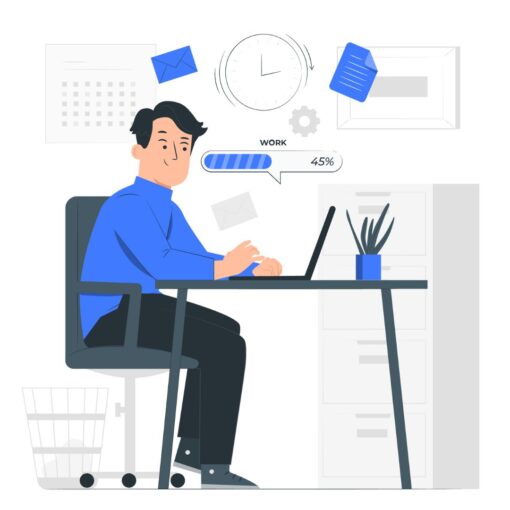Ever wondered, choose all that apply. why are internal links important for seo? This isn’t just a classroom query—it’s a critical component of your digital marketing strategy that can elevate your website’s performance in search engine results. In this comprehensive guide, we’ll dive deep into the importance of internal linking, dissecting every aspect of its impact on SEO. Whether you’re an SEO novice or a seasoned pro, our witty, insightful, and detailed discussion will equip you with the knowledge to optimize your site’s structure and boost its rankings. Throughout this article, the keyword choose all that apply. why are internal links important for seo? will feature prominently as we unpack each element and offer actionable advice to help you harness the full potential of internal links.
What Are Internal Links?
Internal links are hyperlinks that point from one page on your website to another. Unlike external links, which direct users to a different website, internal links help navigate within your own site. But why do they matter? Simply put, internal links are essential for both SEO and user experience.
When you ask yourself choose all that apply. why are internal links important for seo?, the answer unfolds through several layers: they distribute link equity, help search engines understand your site’s structure, and keep visitors engaged by guiding them to relevant content. In essence, they’re the connective tissue of your website, forming an intricate network that benefits both users and search engines.
The Role of Internal Links in SEO
Understanding the pivotal role of internal links is the first step toward optimizing your website. Let’s break down why internal links are a cornerstone of a robust SEO strategy:
1. Improved Site Crawling and Indexing
Search engines like Google use crawlers to navigate your website. Internal links act as pathways that guide these crawlers through your site, ensuring that every page is discovered and indexed. Without internal links, some of your pages might remain hidden from search engines, leading to missed opportunities for ranking.
2. Enhanced Page Authority Distribution
Every page on your website has a certain amount of link equity—a measure of its ability to pass on SEO value. Internal links help distribute this equity from high-authority pages to those that need a boost. This strategic flow of authority can significantly improve the ranking potential of your entire site.
3. Better User Engagement
Good internal linking keeps users on your site longer by providing them with additional relevant content. This reduces bounce rates and increases dwell time—both of which are positive signals to search engines. Thus, if you’re pondering choose all that apply. why are internal links important for seo?, remember that a well-structured internal linking system is critical for enhancing user engagement.
4. Contextual Relevance and Keyword Association
When you use anchor text effectively within internal links, you reinforce the context of the linked pages. This practice not only aids search engines in understanding the relationship between your pages but also highlights key topics and keywords that are important for your SEO strategy. This is a direct answer to choose all that apply. why are internal links important for seo? because they provide context and relevance to your content.
For more technical details, you might explore resources like Moz’s Guide to Internal Linking to see how top SEO experts approach internal linking.
Benefits of a Solid Internal Linking Strategy
When you implement an effective internal linking strategy, you’ll notice several tangible benefits that answer choose all that apply. why are internal links important for seo? Here are the primary advantages:
Enhanced Site Navigation
A user-friendly website makes it easier for visitors to find what they’re looking for. Internal links act as signposts, directing users to related content, popular posts, or product pages. This intuitive navigation system keeps users engaged and reduces frustration.
- Intuitive Pathways: Clear internal links help users discover additional information without needing to search extensively.
- Improved Content Discoverability: Even older content can get a new lease on life when linked from recent articles or prominent pages.
Improved User Experience
User experience (UX) is a vital ranking factor in today’s SEO landscape. By incorporating internal links naturally, you guide users on a seamless journey through your content. This not only enhances their experience but also encourages them to spend more time on your site.
- Reduced Bounce Rates: When users find relevant content through internal links, they are less likely to leave your site immediately.
- Increased Engagement: Engaged users are more likely to convert, whether that means signing up for a newsletter, making a purchase, or simply exploring further.
Boosted Page Authority
Internal links help distribute the authority of your top-performing pages to other pages that might not rank as well on their own. This practice boosts the overall SEO performance of your site.
- Equity Flow: By passing on link equity, internal links can elevate the ranking of key pages.
- Targeted Page Boosting: Strategically linking to pages that need a ranking boost is an effective way to optimize your entire site.
Contextual SEO Benefits
Using meaningful anchor text in your internal links reinforces the topic of the destination page. This association between the link and the target content helps search engines understand the relevance and context of your pages.
- Enhanced Semantic Signals: The right anchor text can help search engines associate your pages with specific keywords.
- Topic Reinforcement: Consistently reinforcing key topics across your site builds a stronger thematic presence in the eyes of search engines.
Best Practices for Internal Linking
Implementing an effective internal linking strategy requires careful planning and attention to detail. Here are some best practices to ensure you’re maximizing the SEO potential of your internal links while answering choose all that apply. why are internal links important for seo?
Use Descriptive Anchor Text
Anchor text is the clickable text in a hyperlink. Using clear, descriptive anchor text is crucial for both SEO and user experience. Avoid generic terms like “click here” and instead describe what the user will find on the linked page.
- Example: Instead of saying “read more,” try “discover our advanced internal linking strategies.”
- Keyword Integration: Where appropriate, integrate your focus keyword—choose all that apply. why are internal links important for seo?—to provide additional context.
Link to Relevant Content
Only link to content that is relevant to the topic at hand. Irrelevant links can confuse users and dilute the SEO value of your internal linking strategy.
- Content Relevance: Ensure that each link adds value and guides users to related topics or deeper insights.
- Logical Flow: Maintain a natural flow in your content by linking related ideas and themes.
Maintain a Natural Distribution
Overloading your pages with internal links can appear spammy and may negatively impact user experience. Aim for a balanced approach that enhances the reading experience without overwhelming your visitors.
- Avoid Overlinking: Use internal links judiciously to avoid distracting or frustrating readers.
- Strategic Placement: Insert links where they naturally fit within the content rather than forcing them into every paragraph.
Regularly Audit Your Internal Links
Websites evolve, and so should your internal linking strategy. Regular audits can help identify broken links, outdated content, and opportunities for improvement.
- Scheduled Reviews: Conduct periodic reviews to ensure all links are functional and relevant.
- Content Updates: Update or replace links as necessary to reflect changes in your content strategy.
Use a Hierarchical Structure
Organize your website in a logical hierarchy to ensure that your internal links reflect the overall structure. This helps search engines understand the relationship between your pages and improves navigation.
- Silo Structure: Group related content together using a silo structure to boost topical relevance.
- Breadcrumb Navigation: Implement breadcrumb navigation to enhance the user journey and provide additional linking opportunities.
For further reading on best practices, check out our internal resource on SEO Site Structure Best Practices.
Common Mistakes and How to Avoid Them
Even with the best intentions, internal linking strategies can fall prey to common pitfalls. Recognizing these mistakes will help you answer choose all that apply. why are internal links important for seo? by understanding what to avoid.
1. Overusing Exact Keywords
While it’s important to include your focus keyword—choose all that apply. why are internal links important for seo?—overusing it can result in keyword stuffing, which may harm your SEO efforts.
- Balanced Usage: Integrate the keyword naturally without forcing it into every sentence.
- Context Matters: Ensure that the keyword fits contextually and doesn’t disrupt the flow of your content.
2. Linking to Irrelevant Content
Linking to pages that do not align with the subject matter can confuse both users and search engines.
- Relevance is Key: Only link to content that adds value and is relevant to the discussion at hand.
- User Expectations: Always consider whether the link meets the reader’s expectations for additional information.
3. Broken or Outdated Links
Neglecting to update your internal links can lead to broken connections that harm user experience and SEO.
- Regular Maintenance: Schedule regular audits to check for and fix any broken or outdated links.
- Update Strategies: Replace outdated links with current, relevant content to maintain the integrity of your site’s structure.
4. Ignoring Mobile Users
A significant portion of your audience accesses content on mobile devices. Ensure that your internal linking strategy is optimized for all devices.
- Responsive Design: Test your website on various devices to confirm that internal links are easily accessible.
- User-Friendly Navigation: Make sure that navigation remains intuitive, regardless of the device being used.
Advanced Strategies for Mastering Internal Links
Once you’ve mastered the basics of internal linking, it’s time to explore advanced strategies that can further optimize your site’s performance. Here are some expert techniques that answer choose all that apply. why are internal links important for seo? on a deeper level:
Dynamic Linking Based on User Behavior
Implement tools or plugins that automatically suggest related content based on user behavior. This approach not only enhances the user experience but also ensures that internal linking remains current and contextually relevant.
- Content Recommendations: Use algorithms to display related posts or products.
- Enhanced Engagement: Dynamically generated links can help keep users engaged by presenting fresh, relevant content.
Leveraging Analytics to Optimize Link Distribution
Data-driven decisions are key to refining your internal linking strategy. Utilize tools such as Google Analytics to understand user behavior and adjust your linking strategy accordingly.
- User Flow Analysis: Identify common paths through your website and optimize links to support these journeys.
- Performance Metrics: Monitor metrics like time on site and bounce rate to evaluate the effectiveness of your internal links.
Implementing a Content Hub Strategy
Organize your content into hubs that focus on specific topics. By linking hub pages to subtopic pages, you can create a strong internal network that reinforces topical authority.
- Content Clusters: Group related content into clusters and link them to a central hub page.
- Thematic Relevance: This strategy reinforces the relevance of your content, helping search engines understand the depth of your topic coverage.
Utilizing Breadcrumbs and Navigation Menus
Breadcrumbs are not only useful for user navigation—they also provide an additional layer of internal linking that benefits SEO.
- Hierarchical Navigation: Implement breadcrumbs to reflect your website’s structure.
- SEO Benefits: Breadcrumbs can enhance the contextual signals sent to search engines, reinforcing the overall site architecture.
For additional advanced insights, consider exploring our detailed guide on Content Hub Strategies for SEO.
Conclusion: Your Action Plan for SEO Success
In answering choose all that apply. why are internal links important for seo?, we’ve covered a wide spectrum of strategies—from the basics of internal linking to advanced tactics that optimize user experience and boost SEO performance. Here’s a recap of what you’ve learned:
- Enhanced Site Navigation: Internal links create intuitive pathways that guide users through your website.
- Improved Crawlability: They help search engines index your site more efficiently.
- Distributed Authority: Internal links share link equity among your pages, boosting overall site authority.
- Context and Relevance: Using descriptive anchor text reinforces the context of your content, aiding SEO.
- User Engagement: A well-structured internal linking strategy keeps visitors engaged, reducing bounce rates and increasing dwell time.
Your Next Steps
- Audit Your Current Site: Identify opportunities where internal linking can be improved. Use tools like Google Analytics and Search Console to pinpoint pages that could benefit from additional internal links.
- Develop a Content Hub: Organize your content into clusters and create central hub pages that tie related content together.
- Optimize Anchor Text: Ensure that your anchor text is descriptive and includes the focus keyword where appropriate—choose all that apply. why are internal links important for seo?
- Monitor and Refine: Regularly review your internal linking strategy through performance metrics and adjust based on user behavior and changing trends.
By following these actionable steps, you’re well on your way to leveraging internal links as a powerful tool in your SEO arsenal. Remember, the answer to choose all that apply. why are internal links important for seo? isn’t just one factor—it’s a multi-dimensional approach that enhances every aspect of your website’s performance.
Embrace the complexity, experiment with new techniques, and continually refine your strategy to stay ahead in the ever-evolving world of SEO. Internal links are more than just navigational aids; they’re essential instruments in building a robust, search-engine-friendly website.
Final Thoughts
As you integrate the insights from this guide into your digital marketing strategy, keep in mind that internal linking is a dynamic and evolving process. The more you experiment and optimize, the better you’ll be at answering choose all that apply. why are internal links important for seo? with tangible, positive outcomes for your site’s performance.
By implementing the best practices and advanced strategies outlined above, you’re not just improving your site’s SEO—you’re enhancing the overall user experience, driving engagement, and ultimately increasing your website’s authority and visibility in search engine results.




